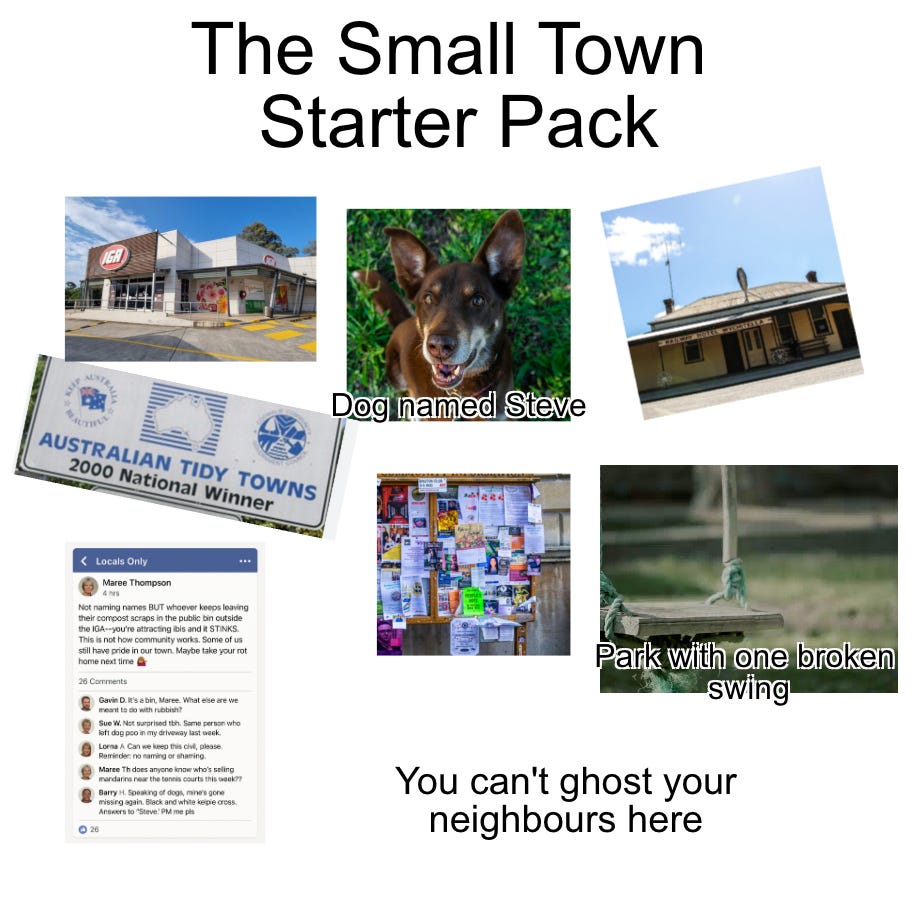From the IGA to the Institution: What living in a small town taught me about civic engagement
We keep getting engagement wrong, for reasons we rarely talk about
How do we get people to civically engage? How do we build real community? And why do institutions struggle so profoundly to get it right?
I’ve spent the last 15 years working across government, grassroots campaigns, tech platforms and community organisations - from Cambodia to Castlemaine and even Guyana. My background is in digital activism (why do people participate? was largely the question I was obsessed with for my doctoral thesis), with a Masters in community practice and certificate in facilitation. I’ve built platforms, run consultations, and sat in rooms where engagement was just a checkbox. And also ones where it genuinely worked. What I’ve learned is that most of us are getting engagement wrong. And for reasons we rarely talk about.
These questions have followed me through every layer of my work - from collecting over 120,000 stories of gender-based violence online, to consulting on government community engagement strategies. But strangely, the place I learned the most about community wasn't in a webinar or a research paper. It was when I moved to a small town. Living in a small town helped me understand community not as a theory but as a living, breathing, fragile thing - and one we keep misunderstanding.
There are three layers I want to talk about here, and they build on each other: the structural, the institutional, and the personal. Until we reckon with all three, civic engagement will keep failing to live up to its promise.
Let’s get the macro answer out of the way first:
We expect people to participate in shaping society while denying them the basic conditions required to do so.
Keep reading with a 7-day free trial
Subscribe to Dr Zoë's Substack to keep reading this post and get 7 days of free access to the full post archives.




